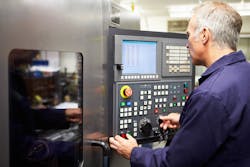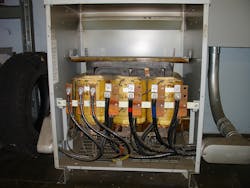Computer numerically controlled (CNC) machines have been used increasingly over the last 20 years. The ability to machine parts with consistency and accuracy, coupled with faster production, make CNC machines popular among large and small machine shops. Along with these benefits comes the challenge of operating a sophisticated and sensitive machine.
In the early 2000s, the power quality industry was fighting an uphill battle with CNC manufacturers' improper installation requirements. It was common to find the manufacturer recommended the installation of an isolated ground rod at the CNC machine and advised to not connect to the “dirty” building grounding electrode system. However, these requirements violated National Electrical Code (NEC) rules in many ways, specifically in proper bonding and grounding of the equipment.
The misunderstanding came from improper installations in which the manufacturers thought that isolating the machine, its electronics, servos motors, and the computer would somehow protect it. This was not the case, as it actually caused more damage.
This has since been rectified by most mainstream CNC manufacturers, however, those old installations are still in use today. When investigating any CNC misoperations or damage, always look for the isolated ground rod installation.
Let’s review a quick case study that highlights a failure from an isolated ground installation, but with an additional twist.
Upon inspecting yet another damaged CNC machine, the motor contactors and servo drive units were found melted down. The isolated ground rod was found, but wasn’t totally to blame for this type of damage. After investigating the date and time of the damage, it correlated with an electric utility cable failure near the customer site. This cable failure in turn caused a rise in ground potential for the surrounding area. If the facility was properly bonded and grounded, there would be no change in the internal electrical system voltage, either between earthed (grounded) points or reference to neutral. With this damaged CNC machine, something else had to be miswired.
A more specific problem was identified at the transformer (480V/120-208V 3-phase) that served the CNC machine. Look closely at the picture of the transformer above. Get a pen and notepad and start listing the many NEC grounding and bonding violations. The main cause of the component meltdown was the lack of a system bond jumper, connection to the earth, and the grounding electrode system (NEC Sec. 250.30). The contactors had melted down due to erratic voltage, most likely low phase-to-phase and phase-to-neutral voltage. When the voltage dropped erratically, the current rise overheated the component and lead to the failure.
The transformer neutral (XO) terminal must be bonded and earthed to ensure the voltage is stable when the ground potential rise occurs by outside influences. Grounding violations like this are much worse than the isolated ground rod alone. The myth of “dirty” grounds within a facility is typically caused by improper grounding and bonding at other locations. Systems installed per the NEC, and in some cases IEEE 1100, will provide proper operation of sensitive electronic equipment without violating the standards.
About the Author
Bryan Glenn
Power Quality Consultant
Bryan Glenn is a power quality consultant for EC&M magazine. He can be reached at [email protected].

